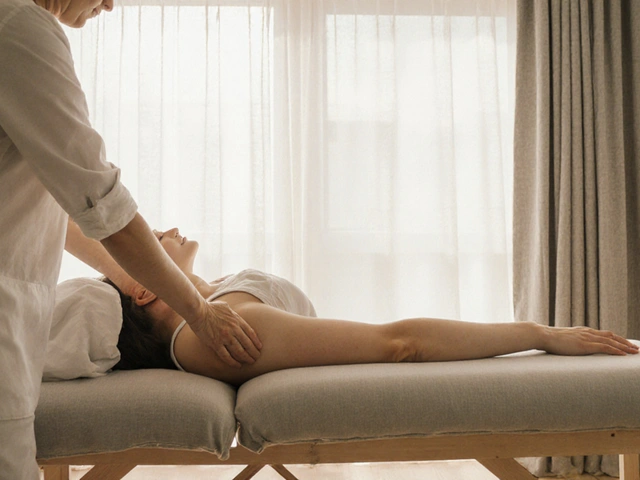Lomi Lomi Massage: What It Feels Like and Why People Love It
Ever had a massage that felt more like a slow, steady dance than a series of presses and pokes? That’s Lomi Lomi. This Hawaiian-style massage uses long, flowing strokes with hands, forearms, and rhythmic movement to ease tension, move fluid, and calm the nervous system. It’s less about targeting one knot and more about creating a whole-body shift.
Therapists often link breath, intention, and touch. You might notice the practitioner working in long waves, almost like stroking the body from top to toe. That steady motion helps circulation and lymph flow, and many people report a deep sense of release—physically and emotionally—after a session.
What to expect in a session
Sessions usually start with a quick chat about your health and what you want from the session. Expect warm oil, slow movements, and a rhythm that doesn’t rush. The massage can feel gentle or firm depending on the therapist and your needs. Many sessions last 60–90 minutes, and because Lomi Lomi uses bigger, flowing strokes, you’ll often feel relaxed right away.
Privacy and comfort vary. Some therapists use sheets and draping, others prefer a more open, ritual-like approach. If you want quiet, music, or specific pressure, say so up front. Lomi Lomi is meant to be a shared experience—clear communication makes it better.
Practical tips before you book
Pick a therapist with training in Lomi Lomi or Hawaiian bodywork. Ask how long they’ve practiced and whether they use forearm techniques. If you have recent injuries, blood clots, or skin conditions, check with your doctor and tell the therapist—Lomi Lomi is powerful and not right for every condition.
For first-timers: stay hydrated, avoid heavy meals beforehand, and plan a slow hour after the massage so you can rest. Wear loose clothes to your appointment. After the session, drink water and move gently; you may feel relaxed or strangely energized for a few hours.
How is Lomi Lomi different from Swedish or deep tissue? Swedish breaks down muscle with repeated strokes and kneading. Deep tissue isolates tight spots. Lomi Lomi focuses on flow and whole-body connection—think long, continuous strokes rather than short, targeted pushes.
If you want emotional release, Lomi Lomi can help. Many people cry, sigh, or feel lighter. That’s normal. The technique invites the body to let go, so mental shifts often follow physical ones.
Short checklist: tell your therapist about health issues, ask about their Lomi Lomi experience, plan downtime afterward, and keep an open mind. If you try it, you might find it’s not just a treatment—it’s a gentle way to reset your body and calm your mind.

Lomi Lomi Massage: Embrace Wellness with an Ancient Hawaiian Touch
Lomi Lomi massage isn't your typical spa treatment—it’s a unique Hawaiian practice that blends rhythm, touch, and even traditional prayers for deeper healing. This article breaks down how Lomi Lomi stands apart from other massages, what to expect when you book a session, and tips to get the most out of it. Get real advice on choosing the right therapist and see why more people swear by its effects for both body and mind. You’ll also pick up interesting facts about this soulful massage that goes beyond muscles and into well-being. If you’re curious about wellness rituals that actually work, this one’s worth a look.

Discover the Healing Power of Lomi Lomi Massage Therapy
Lomi Lomi, a traditional Hawaiian massage technique, combines the elements of nurturing touch with rhythmic motions to promote healing and relaxation. This therapy not only aims to ease muscle tension but also to restore the body's energy flow, fostering a sense of inner peace. With roots deep in Hawaiian culture, it involves more than just physical manipulation; it integrates mind-body connections to support emotional wellbeing. This article dives into the history, benefits, techniques, and how one can incorporate Lomi Lomi into their routine for enhanced physical and spiritual health.
Categories
- Health and Wellness (148)
- Alternative Therapies (86)
- Massage Therapy (40)
- Travel and Culture (15)
- Beauty and Skincare (9)
- Holistic Health (8)
- Health and Fitness (5)
- Spirituality (5)
- Other (2)
- Personal Development (2)



